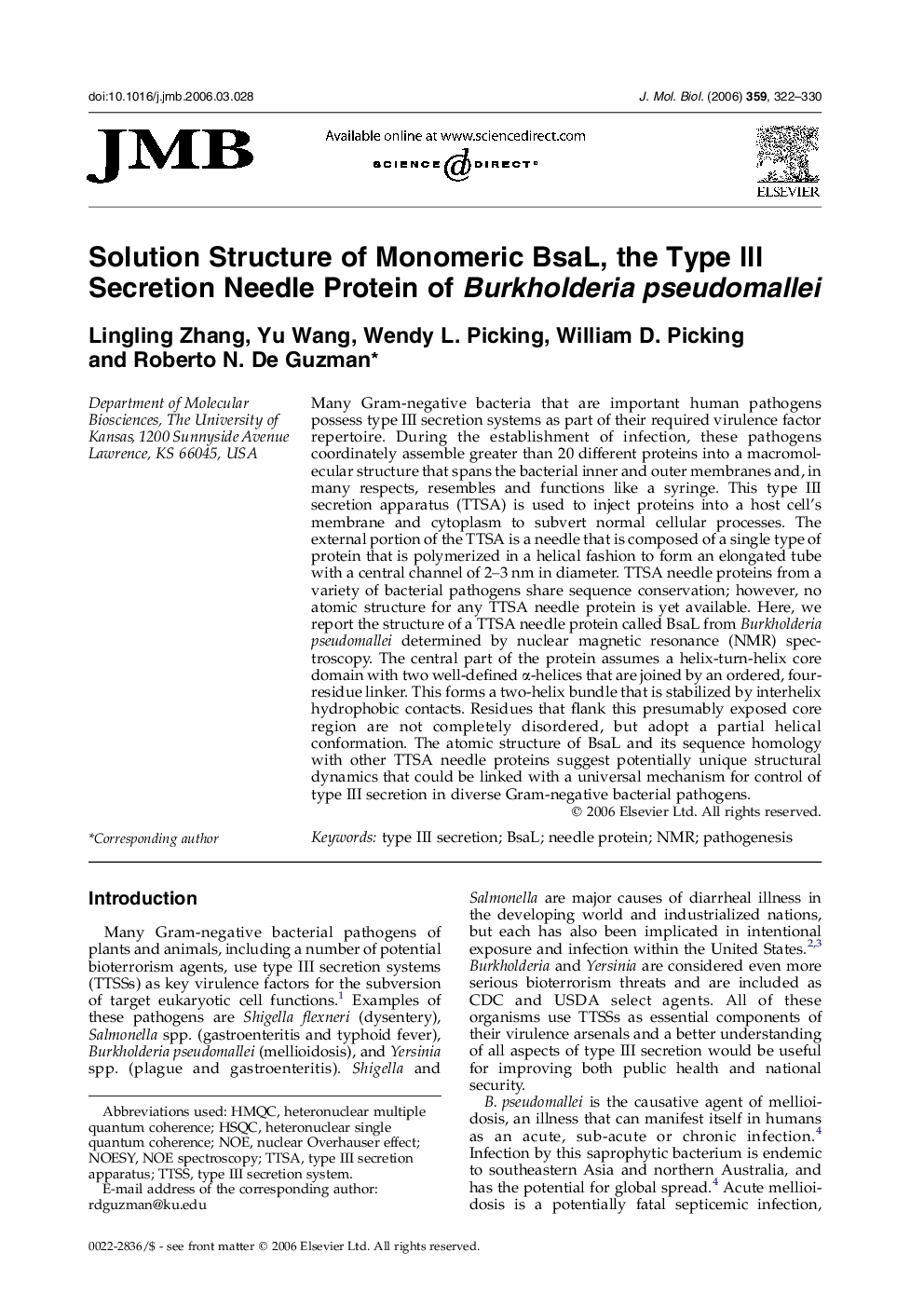| کد مقاله | کد نشریه | سال انتشار | مقاله انگلیسی | نسخه تمام متن |
|---|---|---|---|---|
| 2189711 | 1096220 | 2006 | 9 صفحه PDF | دانلود رایگان |

Many Gram-negative bacteria that are important human pathogens possess type III secretion systems as part of their required virulence factor repertoire. During the establishment of infection, these pathogens coordinately assemble greater than 20 different proteins into a macromolecular structure that spans the bacterial inner and outer membranes and, in many respects, resembles and functions like a syringe. This type III secretion apparatus (TTSA) is used to inject proteins into a host cell's membrane and cytoplasm to subvert normal cellular processes. The external portion of the TTSA is a needle that is composed of a single type of protein that is polymerized in a helical fashion to form an elongated tube with a central channel of 2–3 nm in diameter. TTSA needle proteins from a variety of bacterial pathogens share sequence conservation; however, no atomic structure for any TTSA needle protein is yet available. Here, we report the structure of a TTSA needle protein called BsaL from Burkholderia pseudomallei determined by nuclear magnetic resonance (NMR) spectroscopy. The central part of the protein assumes a helix-turn-helix core domain with two well-defined α-helices that are joined by an ordered, four-residue linker. This forms a two-helix bundle that is stabilized by interhelix hydrophobic contacts. Residues that flank this presumably exposed core region are not completely disordered, but adopt a partial helical conformation. The atomic structure of BsaL and its sequence homology with other TTSA needle proteins suggest potentially unique structural dynamics that could be linked with a universal mechanism for control of type III secretion in diverse Gram-negative bacterial pathogens.
Journal: Journal of Molecular Biology - Volume 359, Issue 2, 2 June 2006, Pages 322–330